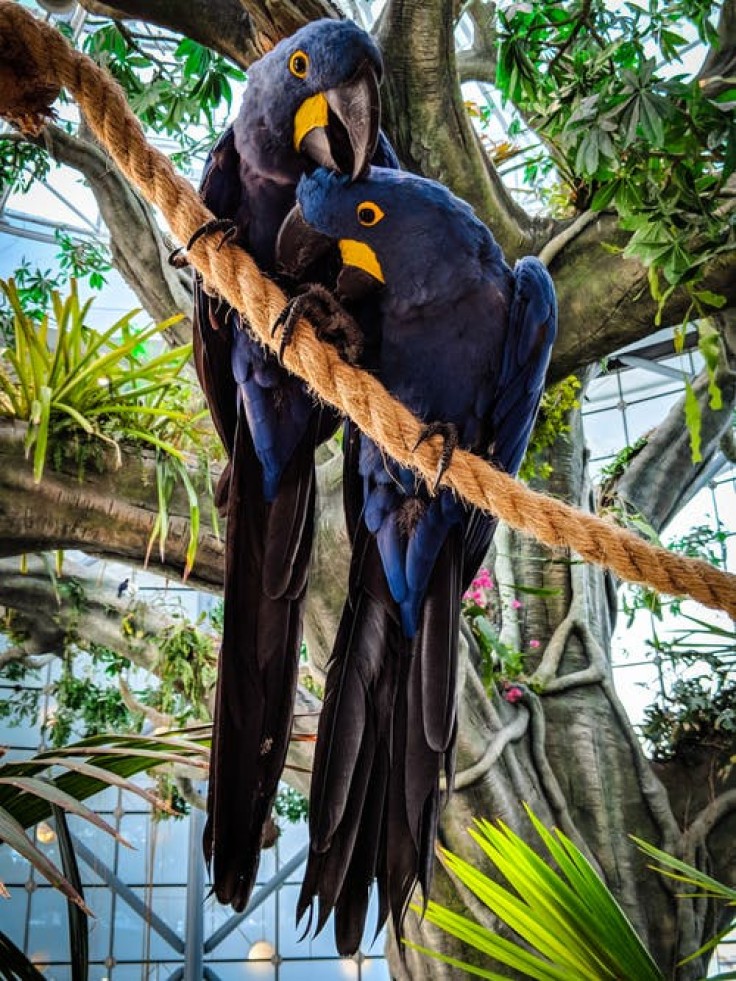
The males of species that form long-lasting pair-bonds, like many birds, often continue to make elaborate displays of plumage, colors and dances after they mate with a female. While their time and energy might be better spent taking care of their offspring, these displays also encourage the female to invest more of their energy into the brood.
But why all this attention between mates when the males could just increase their odds of procreating by seeking out as many mates as possible? A new study in the Proceedings of the National Academy of Sciences by biologists at the University of Chicago and the University of North Carolina explains how this form of sexual cooperation and bonding evolves.
"Many bird researchers can tell a story like the experience I once had in the UK. I caught a female goldfinch, placed her in a bird bag and carried it back to the banding station. All the way back to the station, her mate followed, calling," said UChicago biologist Trevor Price, PhD, senior author of the new study. "He waited impatiently in a nearby tree as I banded the female, and when I released her the pair flew off together in close company, twittering. This kind of thing happens in many other species, too, so forming a strong pair bond and emotional attachments between a male and female is evidently not only a feature of humans."
In contrast to theories of sexual selection that predict males have the most to gain by seeking out as many mates as possible, evolutionary explanations for the opposite kinds of behavior--loyalty to one mate, teamwork and private displays between pairs--have been harder to explain. The new paper shows how these behaviors often inevitably evolve in species that form pair bonds.
Sticking around and showing off
Many experiments in birds, and some in fish, have now shown that a male that displays more vigorously, makes a sweeter song or carries a more attractive color stimulates his mate to invest more in their brood. For example, in the 1980s Nancy Burley famously showed that placing red color bands on a male zebra finch's legs results in his mate working harder for the brood, and consequently raising more of their young.
Findings like this are commonplace. They seem strange, but are readily explained if the extra stimulation by the male exploits the cues a female is already using in other contexts. For example, zebra finches have red beaks already; Perhaps the more of the color red on display, the greater the excitement because it elevates the female's hormone levels. But while the appearance of the flashy display that stimulates females may be good for the male (he has more offspring), it is likely bad for the female to invest more (she has to work harder, affecting her chances of successfully raising more offspring in the future).
Using a mathematical population genetic model, Price, Maria Servedio, PhD, from the University of North Carolina, and their colleagues show how these scenarios could play out to the species' advantage by weighing the costs of their investment with the number of hatchlings they can raise over many generations.
For example, say the females of a species usually lay three eggs and their partner helps them to raise the young, but a male with increased blue coloration causes his mate to lay four eggs. The blue males have more offspring than duller males, so blue males become increasingly common over generations.
However, raising the extra young comes at a great cost to the females, so a female who lays only three eggs has an advantage over one laying four, and these females become increasingly common. At the end of this process, all males are blue and all females lay three eggs. But now, if the male does not create a display, females would only lay two eggs, which is not good for either one of them.
In other words, males have to stick around and show off for both the male and the female to get maximum benefits. The evolutionary process can be repeated many times with another color or kind of display. In the end the female can become so dependent on multiple aspects of the male's display that without the display she barely ovulates, as has been shown for ring doves.
"The models enable us to see the wide ranges of conditions that can cause displays to become stuck in the population, evolutionarily, and that can lead to this result," Servedio said.
A strong evolutionary footing for fidelity
More than 80 years ago, the British biologist Julian Huxley wrote about bird displays, stating that, "Competition between males for mates, accompanied by any form of female choice is not the common phenomenon postulated by Darwin....in most monogamous birds, display begins only after pairing up for the season has occurred." He then went on to discuss how these displays contribute to a strengthening of the pair bond.
"Huxley was on to something back then, but his ideas have largely been ignored for a lack of understanding about how this could evolve," Price said. "We think this new research places affection between members of a pair, and mate fidelity, on a strong evolutionary footing."
© 2025 University Herald, All rights reserved. Do not reproduce without permission.








